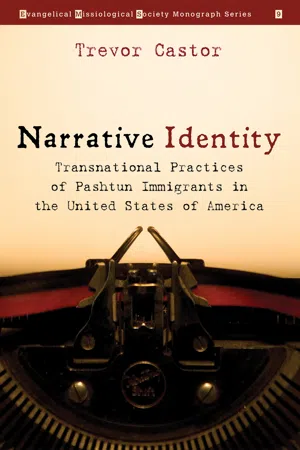![]()
1
Shifting Identity
The term identity is frequently used but rarely defined in public discourse; and, in some cases, the same could be said for academic writing as well. There seems to be considerable confusion regarding the meaning of identity yet there is hardly a more popular word. Phillip Gleason highlighted this phenomenon in his 1983 essay on the semantic history of identity. He suggested that though the word was being used constantly in discussions and in writing, most people, if pressed would have a difficult time defining what exactly they meant. The lack of precision and consistency coupled with the popular and clichéd usage of the term extinguished any analytical value for Gleason. He concluded his study by suggesting “that a good deal of what passes for discussion of identity is little more than portentous incoherence.”
Despite the lack of clarity and questionable analytical value of the term identity, interest both on the academic and popular level continued throughout the twentieth century and into the twenty-first. In 1999, James Fearon conducted a similar study as Gleason’s and observed that in the fifteen years not much had changed:
Fearon’s observation is particularly troubling considering the rapid expansion of publications containing the term identity since the mid-twentieth century. The following Google Ngram chart shows the dramatic increase in book publications containing the word identity leading into the twenty-first century.
Note the dramatic increase following the end of WWII.
The number of academic dissertations on identity has dramatically increased as well. A brief survey of the ProQuest dissertation database shows that in 1983, the year Gleason wrote his essay on identity, there were 181 dissertations published with the term identity in the abstract. The same search in 2013 reveals 3,325 dissertations, an increase of 1,737 percent in thirty years. Granted, these numbers must be considered alongside the overall growth of dissertations in social science in order to see whether there is any correlation. In comparison, in 1983 there were 9,599 dissertations published on social science. In 2013, the same search reveals 34,382 published dissertations. That is a 258 percent increase in published dissertations in social science in thirty years. This is a significant increase; however, it does not account for the 1,737 percent increase in dissertations with the term identity mentioned in the abstract.
The increase in academic publications is by no means a suggestion that the term identity is more understood. It is indeed possible, as some researchers have suggested, that the rapid semantic expansion only further contributes to the ambiguity. “If identity is everywhere it is nowhere.” In other words, if identity has come to mean so many different things to so many different people, is there any analytical value to the term? This is a genuine concern considering the sheer volume of identity studies in social science as well as the recent upsurge in popular discourse.
In addition to publications, there is a significant increase in media discourse concerning identity. It is fair to say that the popular meaning of the term is no less elusive than the academic usage. In 2015, Dictionary.com awarded the term identity the “Word of the Year” prize. The rationale for the award was attributed to the ongoing expansion and fluidity of the term, particularly in the areas of usage surrounding issues of gender, sexuality, and race. This makes sense considering that 2015 could be described as a watershed year for these topics in American popular media. A few clear examples that year include the public transgender transition of Bruce Jenner to Caitlyn Jenner, the Supreme Court ruling that legalized gay marriage in all fifty of the United States, and the racially motivated slaying of nine black church members by a self-proclaimed white supremacist in Charleston, South Carolina. Needless to say, 2015 sparked much debate concerning the topic of identity.
However, it should not come as a surprise that the recent increased interest in identity surrounds controversy. This phenomenon was observed by Erik Erikson nearly seventy years ago when the topic of identity was first popularized in social science: “We begin to conceptualize matters of identity at the very time in history when they become a problem.” Erikson’s observation comes from the mid-twentieth century during the initial surge in identity discourse. The “problem” of identity at this point in history is primarily related to the post-WWII increase in immigration. Many of these immigrants, having left their homelands and families, found themselves in the midst of what Erikson called an identity crisis. He argued that the rise of national identity provided a new foundation for those who had lost their heritage. The conceptualization of a national identity, in the words of Erikson, was an attempt “to make a super-identity out of all the identities imported by its constituent immigrants.” Erickson’s words concerning the issues related to immigrant identity continue to be relevant today and are potentially even more debated as identity politics. Immigrant and national identity discussions are at least partially responsible for the recent revival of the term in addition to the aforementioned topics of gender, sexuality, and race.
Regardless of which “problem” initially spurred the recent movement to reconceptualize identity, there is a common underlying debate regarding whether or not identity is fixed or fluid and housed individually or collectively. In order to address these issues, the chapter will briefly discuss how the term identity has shifted since the sixteenth century to current usages in social science. Early uses of the term and the relationship among the disciplines of Theology and Philosophy provides a helpful framework to comprehend the ongoing debate. Understanding the underlying presuppositions of these positions and exploring the origin of the term identity will clarify the discussion regardless of what prefi...

